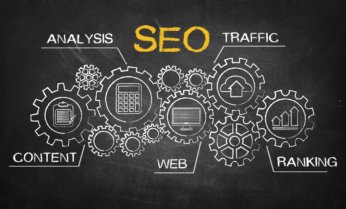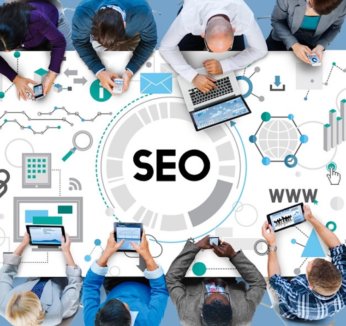| Google’s John Mueller said he would not recommend that you remove old content or old news from your news site for SEO reasons. He said “I don’t think you would get a lot of value out of removing just old news.” John said this at the 50:12 mark into the last video hangout this past Friday. He was asked about removing old news from a news publisher site for SEO reasons. John said it is “not something I would recommend.” He said “from that point of view I wouldn’t do this for SEO reasons.” I don’t think you would get a lot of value out of removing just old news. It’s also not something I would recommend to to news websites because sometimes all the information is still useful. So from that point of view I wouldn’t do this for SEO reasons. If the reasons why you want to remove content or put it into kind of like an archive section on your website for usability reasons or for maintenance or whatever. That’s something that you can definitely do but I wouldn’t just blindly remove old content because it’s old. The advice is a bit different from a year ago but not totally different. Read more: Google: Don’t Remove Old News From Your News Site For SEO Reasons |
| If that wasn’t enough, web designers and agencies are currently reeling from another seismic change. This May, Google launched its Page Experience update, which puts a much greater emphasis on user experience when it comes to ranking websites in its listings. The importance of this should not be underestimated. It means that web designers now need to put much more emphasis on elements like loading speed, interactivity, safe browsing and visual stability…or they’ll quickly see their sites disappear from the first page of Google. Creative Brand Design, a leading London web design agency, is at the cutting edge of all these developments. So we spoke to them to get their take on the new trends that we can expect to dominate in 2022. Read on to learn the trends, some examples of them in action, and how to get on board in your web design practice. 1. Fun and optimism Throughout the 2010s, web and app design was dominated by cooly minimalist, purely functional interfaces. And that made sense at the time. With the iPhone having only appeared in 2007, followed by the first iPad in 2010, most of the public was pretty new to the web. And so making digital services easy to understand, use and navigate was the main priority. As many creatives pointed out, the side effect was to dampen down the more fun and experimental side of the early web. Now that most people are familiar with digital platforms, there’s arguably space for a return to some of that. Read more: Six web design trends creatives need to prepare for in 2022 |
Email quickly emerged as an unsung hero during the pandemic. Branch availability and safety protocols changed almost daily. Government stimulus program rules changed weekly. No customer communication vehicle was as timely or cost-effective as email. But how else did bank marketers successfully deploy email, and what enduring lessons can be learned? Finally, for those who are revisiting which email system to use, what can they learn from their peers in terms of must-have functionality and pitfalls to avoid?
Most successful uses
Bank marketers have an eternal debate regarding sales versus service. This debate carries over into the optimal use of email communication. Community banks often fall on the side of service, emphasizes Jamie Conaghan, CFMP, vice president of marketing, Main Street Bank of Marlborough, Massachusetts.
“We are a relationship bank, so our email is relationship based,” Conaghan says. “We use it to establish trust and add value to our customers. We offer helpful information they can use and benefit from.” Jamie went on to say, whether it is fraud education, holiday hours notification or an invitation to a virtual seminar on HR recruiting, email is a very popular and effective medium.
Other community banks and larger institutions come down on the side of sales, such as Chad Murray, SVP marketing of Think Mutual Bank. “Email is our second most important connection point with customers, after personal interaction,” Murray says.
Read more: Email Marketing Success Lessons from the Pandemic
“We’re currently experiencing longer than usual delays in the Search Console performance report. This only affects reporting, not crawling, indexing, or ranking of websites,” said the Google Search Central Twitter account on the morning of Tuesday, September 21. “We’ll update here once this issue is resolved. Thanks for your patience!”
Many SEOs have noticed the change in their Search Console reports this morning and have taken to social media to ask if they’re the only ones seeing the issue. “Is there a GSC bug? Apologies if I am late to the party here, but the last day we even have partial data available is the 18th?” asked Tessa Bonacci Nadik, Director of SEO Product at Cox Automotive.
She’s not alone. Other SEOS say September 18 was their last day of data. Aleyda Solis reported that her last day of data was September 17.
We’ll continue to update this piece as we know more.
Why we care. If your data isn’t updated, don’t worry just yet. The glitch will likely be fixed soon, but make sure to inform your clients and adjust your weekly reporting to ensure no misunderstandings or data mistakes. If you’re using the Search Console API, it’s also likely you will see 404s until the glitch is remedied. Google assured SEOs that the glitch isn’t affecting how sites are seen or indexed, just how the data is being relayed back to them. It’s also a good reminder to go into Search Console regularly to check your data and not just rely solely on tools that may pull the data into automated reports.
Read more: SEOs experiencing delays in data on Search Console performance reports
The appearance of a website plays an important role in any business whether it is big or small.
The website of your business interacts with the prospects on your behalf. That is the reason why people judge the credibility of your business by its design. While designing your website, keep in mind that your website should be well equipped to cater to a good user experience. A good layout, images, and typography matter more than we usually think.
A study by Stanford found that people quickly evaluate a site by visual design alone. In short, the design of your website:
Sets a good first impression
Builds credibility
Projects authority
Proves legitimacy
Highlights your expertise
Building a website from scratch can be a daunting task. When you fall short of ideas, take inspiration from others. Make them your muse. When you look at the work of others, you gain a new perception of looking at things that might have been missing in your own work. Also, this way you keep pace with the latest trends.
In this article, you will find places to look for the best website designs in the world. There is a massive amount of resources available on the internet to get inspired from. But it can be overwhelming. So without any delay check out a concise list of the top five best website designs to seek inspiration for your ideas.
Read more: 5 Web Design Resources that will Inspire you website
Consumers have never had so many ways to engage with brands, but despite that, a majority of them still prefer the old reliable channel of email marketing. With so much buzz around social media, SMS text messaging, and push notifications, it might seem like the right time to deprioritize email as an engagement channel. But new research shows that would be a huge mistake.
MoEngage conducted a consumer survey across four key global markets: the United States, Canada, the United Kingdom and Germany. The goal was to understand better what consumers expect in communications from brands and how they want their personal data used by brands to deliver a better experience. We learned from this exercise that 33% of all respondents still put email at the top of the list when it comes to preferred engagement channels.
In fact, 39% of global respondents said they would like to receive weekly emails from their favorite brands that contain highly personalized offers. This same survey did show an increase in the adoption of mobile apps, SMS, push notifications, and chatbots as engagement channels – and these are still important as part of your multichannel strategy. Yet, email still reigns supreme. Why?
Here are the top six reasons brands must place email marketing at the top of their priority list:
It Reaches an Audience That Wants to Be There
Email marketing is the best method of direct response marketing there is. That’s because users have raised their hands and actively opted into hearing from you, so they’re more willing to open them to learn about the latest products, sales and personalized offers based on their previous purchase history.
Email is Ubiquitous
While not every global consumer has a social media account, it’s a safe bet they have an email address. Whether you’re enticing new customers or trying to reengage with your existing base, email is still highly valued across internet users. Even in emerging countries where reliable internet infrastructure is not widespread, email is the de facto communication tool. In 2019, the number of global email users was 3.9 billion, and by 2024 is expected to reach 4.3 billion.
Personalization is Easy with Email
Email marketing began as a one-way broadcast to reach the largest possible number of potential customers. Fast forward to today, when advancements in AI, data collection, audience segmentation and analysis make it easier than ever for marketers to create highly personalized email messages.
Read more: Email Marketing: Still a Customer Engagement Workhorse
Search Engine Optimization (SEO) has become a buzz word over the last few years. Many areas of online business have been implementing solid SEO strategies for a while, but ecommerce is still slow to join the rest. Ecommerce stores have been trained to use paid methods, like Google Shopping Ads, Facebook Ads and other social media ads to get people to click through to their store. However, with the ever-increasing cost it takes to acquire new customers, ecommerce store owners should get on board with SEO and develop a solid content strategy for long-term growth and reduce their cost to acquire new potential customers.
The one-legged stool
As I mentioned earlier, the cost of bringing new customers to your ecommerce store is going to keep increasing. If your store is solely reliant on paid traffic, let’s say from Google Shopping, and Google decides you violated one of the many advertising policies, all your traffic dries up and you’re out of business. No traffic means no sales and no sales means you’re out of business by the end of the month.
Relying solely on paid traffic channels is like having a one-legged stool. It’s a lot more secure for the health and longevity of your business to have more legs under the stool, in case one leg gets taken away from you. SEO is one of those legs you need to apply. Not only is it free traffic, but as long as you provide valuable information for the readers, there’s no risk of being removed in the same way paid channels can shut you out.
The results of a well-executed SEO and content strategy take time. Often, an ecommerce store won’t see significant organic traffic for 6 to 12 months after publishing those first pieces of content. But if you keep implementing and producing solid, helpful content, the effects compound over time.
I got banned from Google and Facebook
I share all this from my own experience as an ecommerce store owner. I relied solely on Google and Facebook ads to get traffic and for some unknown reason back in early 2019 both platforms decided I had violated a policy. After that point, I couldn’t get back in their good books.
Every business needs a website. No matter what industry you are in, a website can help you boost your visibility, gain more exposure, generate leads, and ultimately boost your sales for more profit.
But that’s not it. There’s so much more a website can do to help your business become successful. For example, most customers will visit your website and take a tour of it before they make a purchase. You can use this opportunity to highlight your offers and convince them to buy more.
You can even use it to build credibility by displaying customer testimonials. Many marketers also offer customer support through their sites. In a way, your website is one of your biggest assets in helping you create a successful business.
So it’s important for you to design it with all the modern elements that can not just boost user experience but also help you remain at the top of your marketing game.
But how do you do that? If you’re not sure how to create a professional website complete with all modern elements, stop worrying now. In the following section of this article, we’ll tell you about some of the most important elements of website design that can keep you ahead of your competitors.
So let’s find out,
1. Optimized Speed
Imagine a situation in which you excitedly land on a website, hoping that you’ll make some purchase. But as you browse through it, you have to wait endlessly for a single product to be fully visible. The website is so slow that the loading sign doesn’t seem to disappear. What would you do? Keep scrolling or opt-out of the website?
If you chose the second option, you’re definitely on the right track. No one likes slow websites. Sites that take longer to load have a higher bounce rate and lower average time on the page. Not to mention, it majorly affects your conversion rate too. According to reports, even a single-second delay in your loading speed can bring down your conversion rate by 7%.
If you don’t want that to happen to your business, you have to optimize your website speed. It’s one of the most important elements of web design that can improve the user experience on your site. If your site takes longer than 1.7 seconds to load, it’s time to work on optimizing it for the best results. The low speed can be because of your web hosting service, unoptimized images, bulky files, etc. Figure out the reason that’s causing it and fix it at the earliest possible.
Read more: 4 Elements of Modern Website Design You Need to Know About
You hear a lot of chatter about live videos and webinars but while these are awesome marketing tools you should not overlook the tried and true method – email marketing. It is still one of the most effective options available. Research from Litmus Resource Center shows that email generates $42 for every $1 spent, which is an astounding 4,200% ROI. Wow!
Let’s take a look at your email marketing tactics and see where you can improve.
1. Use your name in the “from address” of your email marketing campaigns. Using your business name results in fewer opens because it isn’t as friendly and personal.
2. Make it worth it for your audience to open and read your emails. Always include a surprise in every three or four emails so they get used to the idea that you may give something away in your emails that no one else is going to get. This can be something as simple as a free audio download.
email marketing headlines3. It’s all about stand-out headlines. Focus on crafting headlines that let your readers know what’s inside and why they should open without being dishonest. Your text should deliver everything your headline promises.
4. Segmentation is imperative for good email marketing because that’s the only way you can freely mention the right product, the right service, and the right topic to them at the right time. If you’re new to this tactic, read 50 Smart Ways to Segment Your Email List Like a Pro from Optin Monster.
5. Check out your competition’s email marketing list. Sign up for their freebies and watch how they do things. Don’t copy them, but do figure out how they do it, identify the gaps, and note the topics.
6. Work on building a real relationship with your email list members. Let them reply directly to the emails you send, and then answer them. They like knowing a real person is behind the emails rather than nothing at all. Check your email marketing software, many of them default to a generic reply to address. You can change this for each email.
Read more: 11 Ways to Increase Your Email Marketing Response Rates
Insights from our recent State of SEO Survey report show that although the last year began with uncertainty across the industry, SEO is now more in demand than ever before.
Even so, it is not without its challenges. What issues are SEO professionals facing — and moving forward, what are the threats that might block success?
We surveyed over 2,800 SEO professionals about their experiences in SEO over the last 12 months. Keep reading to find out:
What the biggest challenges were in the last 12 months.
Whether SEO results trended better or worse over the last year.
What SEO pros perceive as the industry’s greatest threats in the years ahead.
What Were the Biggest Challenges in SEO Over the Last 12 Months?
At the start of the pandemic, there was a lot of uncertainty for everyone as businesses tried to navigate an unprecedented situation rife with real-world shutdowns, a near-instant shift to digital, and massive changes in consumer behavior.
As the pandemic unfolded many businesses had to pivot quickly in order to survive. Some struggled while others thrived as digital and ecommerce growth accelerated by several years.
Early in the pandemic, budget cuts were the biggest challenge for SEO professionals, as indicated by 37.6% of survey respondents.
Strategy issues (34.8%) were also a significant challenge in the SEO industry, as was a lack of resources (32.9%).
Read more: The Greatest Challenges & Threats in SEO









